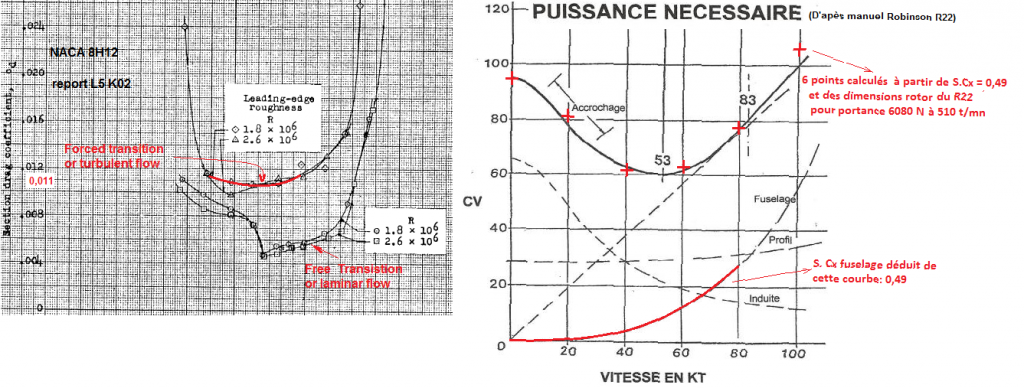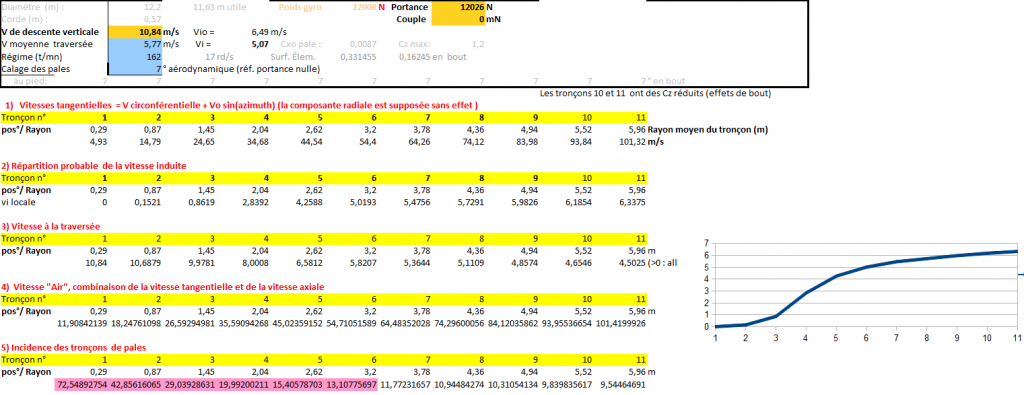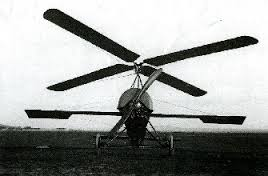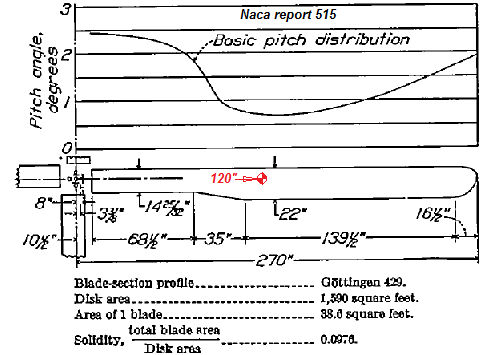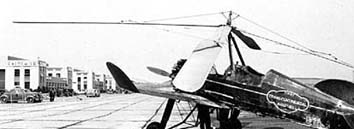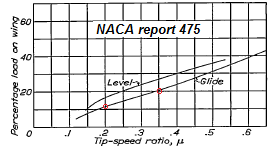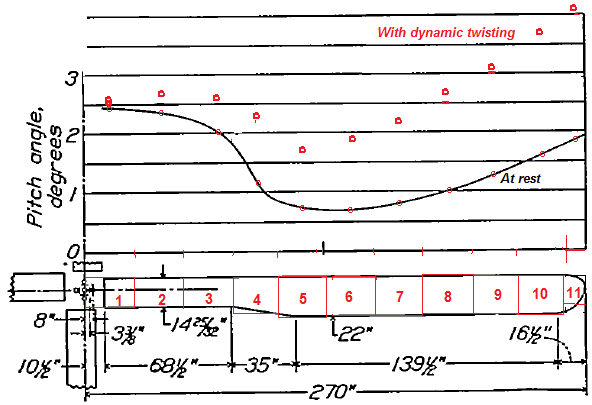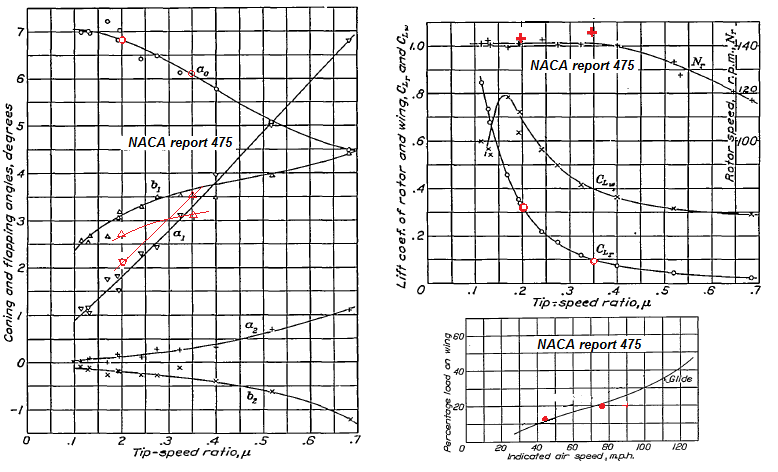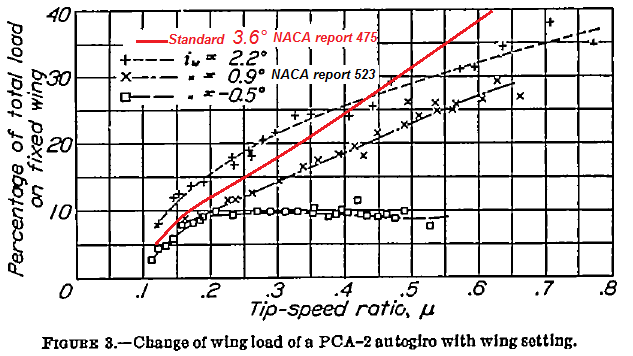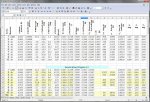Juergen, Voici d'autres résultats de mon tableur comparés aux mesures en vol sur l’autogire Pitcairn PCA 2 .[/B]
Les comparaisons ont porté sur les vols planés n° 3, 7, 10 et 6 du rapport NACA 475, effectués en vols planés (pas d'effet du souffle de l’hélice sur l’aile fixe)
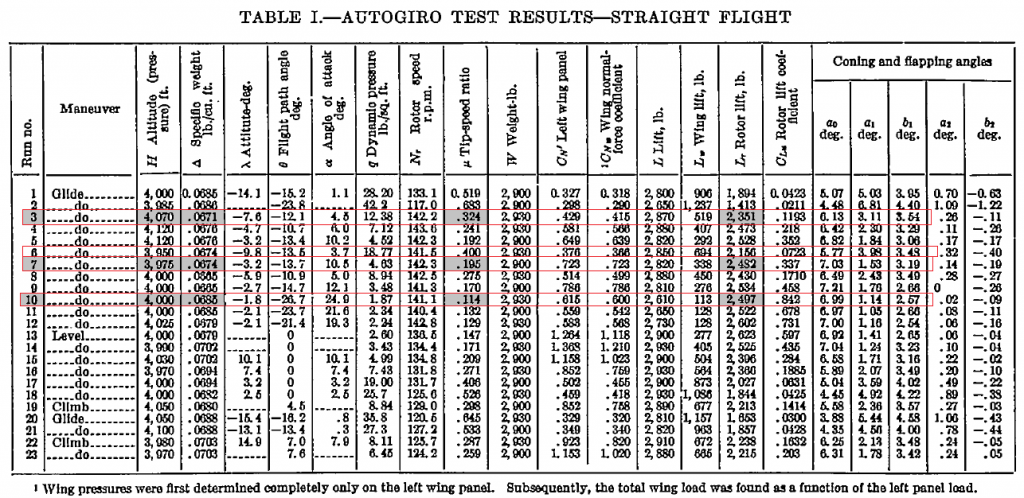 Résultat pour les données correspondantes au vol plané n° 10
Résultat pour les données correspondantes au vol plané n° 10
Le régime calculé du rotor dans ces conditions de charge et de pression dynamique et de masse volumique est 142 t/mn, tandis que la mesure a donné 141,1 t/mn
L’angle d’attaque calculé du disque est 27,2°, tandis que la mesure a donné 24,9° (arbre) + 1,14° (a1) = 26,0°
L’angle de battement longitudinal a1 calculé est 1,3° tandis que la mesure a donné 1,14°
L’angle de battement transversal b1 calculé est 2.6° tandis que la mesure a donné 2.6°
Résultat pour les données correspondantes au vol plané n° 7
Le régime calculé du rotor dans ces conditions de charge et de pression dynamique et de masse volumique est 142 t/mn, tandis que la mesure a donné 142,3 t/mn
L’angle d’attaque calculé du disque est 13.8°, tandis que la mesure a donné 10,5° (arbre) + 1,53° (a1) = 12°
L’angle de battement longitudinal a1 calculé est 2.1° tandis que la mesure a donné 1,53°
L’angle de battement transversal b1 calculé est 2.8° tandis que la mesure a donné 3.2°
Résultat pour les données correspondantes au vol plané n° 3
Le régime calculé du rotor dans ces conditions de charge et de pression dynamique et de masse volumique est 145.8 t/mn, tandis que la mesure a donné 142,2 t/mn
L’angle d’attaque calculé du disque est 7,6°, tandis que la mesure a donné 4,5° (arbre) + 3.11° (a1)= 7,6°
L’angle de battement longitudinal a1 calculé est 3,34° tandis que la mesure a donné 3,11°
L’angle de battement transversal b1 calculé est 3,34° tandis que la mesure a donné 3.54°
Résultat pour les données correspondantes au vol plané n° 6
Le régime calculé du rotor dans ces conditions de charge et de pression dynamique et de masse volumique est 145.2 t/mn, tandis que la mesure a donné 141.5 t/mn
L’angle d’attaque calculé du disque est 6,6°, tandis que la mesure a donné 3.7° (arbre) + 3.98° (a1)= 7,7°
L’angle de battement longitudinal a1 calculé est 3,85°, tandis que la mesure a donné 3,98°
L’angle de battement transversal b1 calculé est 3° tandis que la mesure a donné 3.5°


